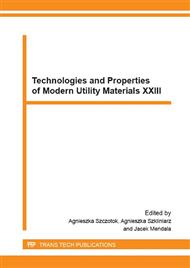p.235
p.240
p.244
p.248
p.252
p.256
p.263
p.267
p.271
The Influence of Thermodynamic Conditions for Steel Filtration Efficiency
Abstract:
The work presents theoretical grounds for the process of refining molten steel from liquid non-metallic inclusions, using the method of filtration with ceramic filters - the thermodynamic precondition to the absorption of liquid non-metallic inclusions on the surface of a ceramic filter.
Info:
Periodical:
Pages:
252-255
Citation:
Online since:
February 2016
Authors:
Keywords:
Price:
Сopyright:
© 2016 Trans Tech Publications Ltd. All Rights Reserved
Share:
Citation:


